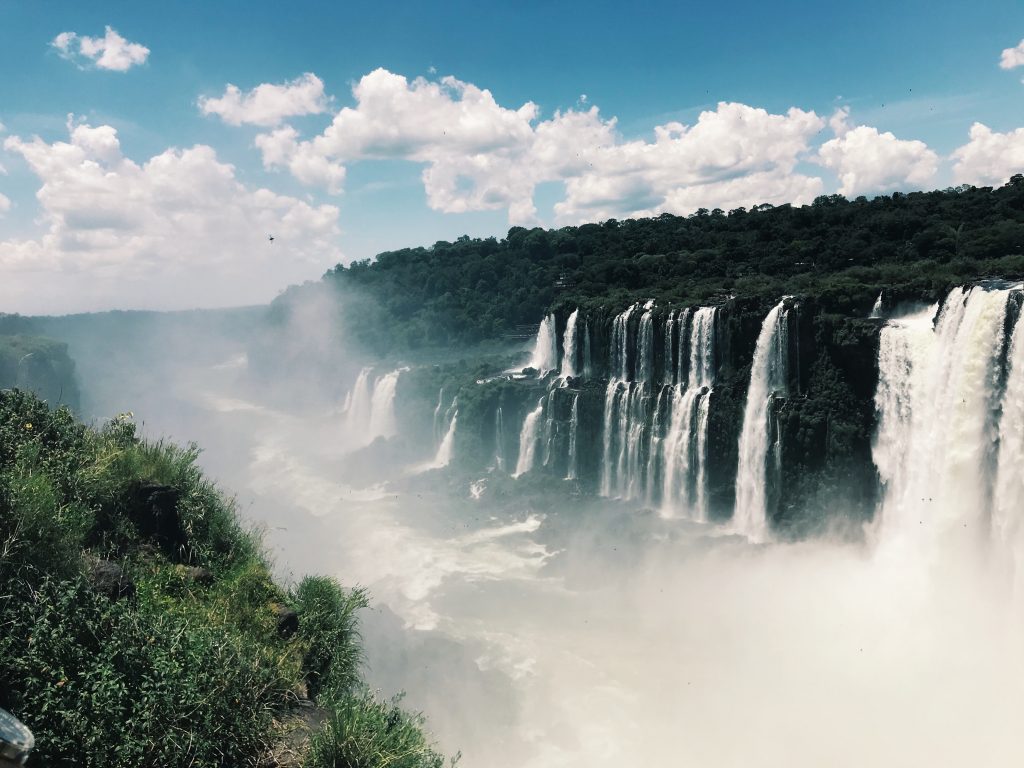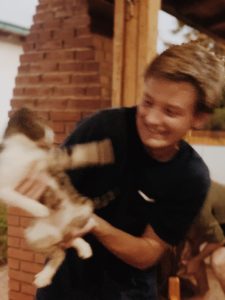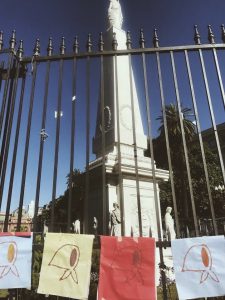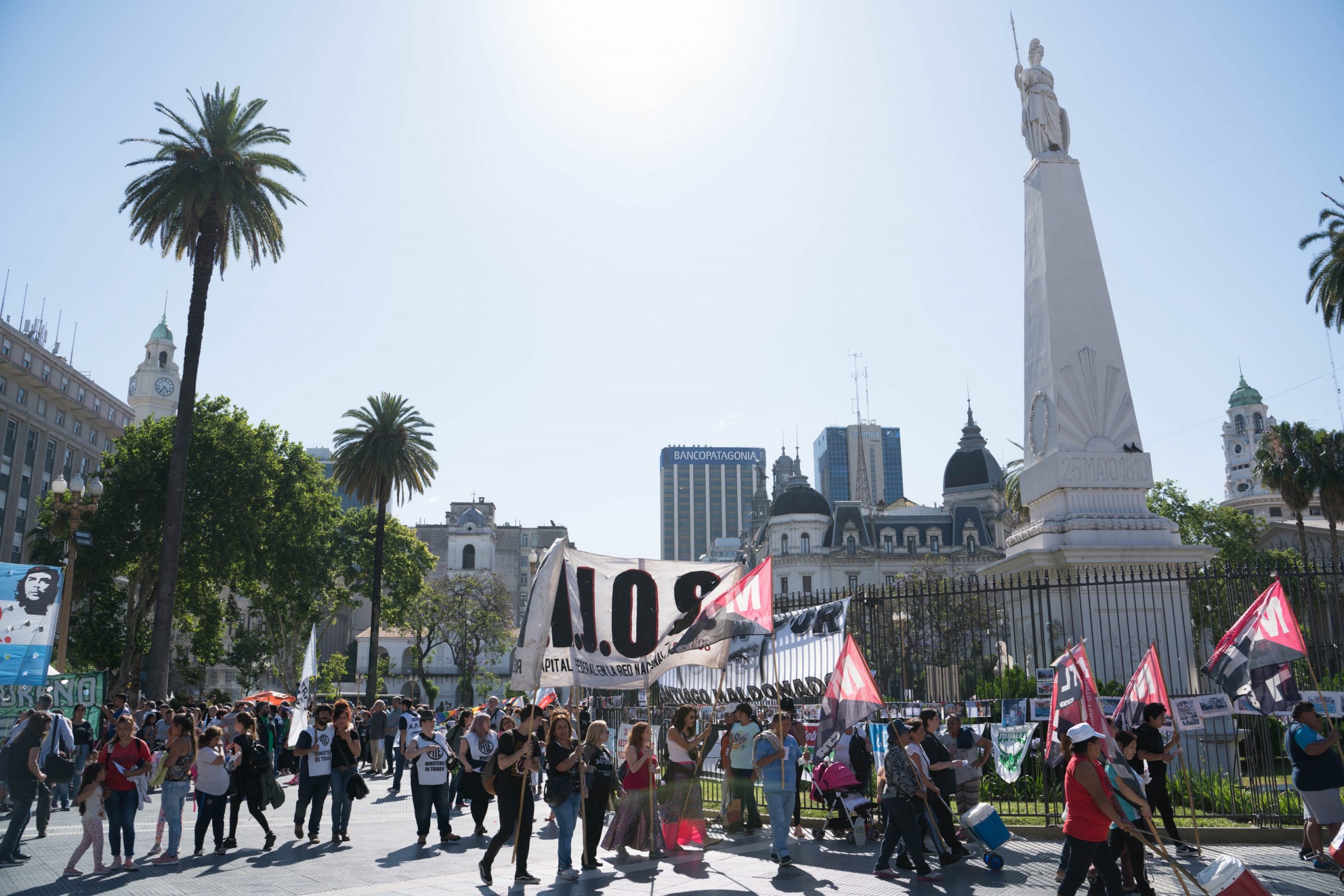Don’t Go Chasing Waterfalls, But Do Chase After the Truth (and a Cat Will Chase You Even If It Doesn’t Like Fruggo)


Last weekend a portion of the group went to Iguazú National Park to see the most incredible and massive waterfalls I have ever seen in my life. I knew that they were going to be cool but I didn’t have many expectations because I thought to myself, how cool can a couple waterfalls be? NO. They were so much better than I had thought. It felt like I was in a completely different universe, a paradise of sorts belonging somewhere in a Disney movie. It was also fun because 11 of us shared two little cabanas right outside the park where we were able to barbecue (and by we I mean we made Sam do all of the barbecuing) and swim in the public pool and just lounge around. It made me realize how much I have missed the communal living we took for granted in Tanzania— all living in one hallway, sharing bathrooms, and hearing every conversation. The two cabanas also came with complimentary cats. By this I mean three cats kept hanging around our little patio area and we named them Egdar, Allan, and Poe. I think Edgar was my favorite because he was the most social one. Some people in our group really did not like the cats and at one point Noah (who simply does not understand the nature of animals) tried to lure Edgar into a field by making a trail of Fruggo all the way out there. (Fruggo is a popular sugary cereal here that tastes like a very chemically version of Trix). After dumping a large amount of cereal into the field, he sprinted away as though he had just lit off a firework. Turns out not even Edgar likes Fruggo because after following Noah out there he just sniffed it and then came prancing right back. Oh, Noah. He tried his best.
The morning before we left the cabins, Zibbo (our resident vegan and top chef) made us all banana pancakes and we had a lazy morning. It was the most homey I’ve felt in a while. On that note, I am so so ready to come home. I absolutely love it here but I think as the end of Global gets closer, I become more and more ready to get back to my family and the comfort of my own home– though I am certainly not ready for the snow.

After a fun, free weekend, it was time to get back into the academic aspect of our program. We all had papers for our education class due at the end of the week, so for me it was a lot of coffee shop time and writing. I set up camp in a nearby coffee shop called Green Eat and they played Demi Lovato the entire time I was there (about 3 hours). Demi happens to be my favorite artist of all time, so this was a good omen for me. While I did spend a lot of time on homework this week, we also got to do a bunch of fun activities such as going on a graffiti tour and taking a tour of the Kirchner Cultural Center, but the actives I want to elaborate on are the ones that we did for our Arts in Argentina Class surrounding human rights in Argentina.
At the beginning of the week, we visited ex-ESMA, also known as the Espacio Memoria y Derechos Humanos. Previously in class we had been learning about the civic-military dictatorship lasting from 1976 – 1983 in which many students, teachers, lawyers, and political activists were abducted by the Juntas military regime and became the ‘disappeared’ people during that time who were taken to facilities like ESMA. In such facilities, also known as Clandestine Centers, the ‘disappeared’ would be interrogated, tortured, held captive, and/or murdered. ESMA was officially recognized as a Higher School of Mechanics of the Navy and originally was an educational building for the Navy of Argentina. However, during this period the building was used for the illegal and inhumane treatment of innocent people who did nothing but disagree with the dictatorship in some form or were simply taken for no reason whatsoever. For example, many lawyers were abducted for their attempts to acquire a writ of habeas corpus in an attempt to bring justice to previous disappeared people, thus rendering the law helpless in the fight for innocent lives.
Being in this place and hearing the stories of the disappeared reminded me of a previous interaction Seda and I had while walking around in San Telmo, a neighborhood of Buenos Aires. The conversation was with a man named Jorge who was selling photographs. Many of the photographs depicted protests and political graffiti, and as we talked with him more, he told us that his brother was one of the disappeared. With tears in his eyes he told us he couldn’t talk about it because it was too painful to remember. It was a very powerful and humbling conversation and at that time I knew little of the pain he felt. After walking through ESMA I understand a bit more of the atrocities Jorge referenced.

Later in the week, we visited the Parque de La Memoria (the remembrance park for the disappeared) and learned that the United States financially backed the dictatorship. To learn about the role the U.S. played in the destruction of innocent lives was both horrifying and eye opening. Around 9,000 names were on the walls of the memorial because those are the ‘disappeared’ whose fates have become certain after continuous trials of military officers. However, there is space for a total of 30,000 names to be put onto the wall because that is the estimated amount of people who were abducted during the dictatorship. Beside the names were the ages that they were abducted and, for some female names, a word to show they were pregnant during the time of abduction/captivity.
After the memorial park, we went to the Plaza de Mayo where we met with Maria Antokoletz whose mother was one of the Mothers of the Plaza de Mayo. Maria’s brother was abducted and taken to ESMA. He was a lawyer and was taken at age 39. The Mothers is a major movement in Argentina formed by multiple mothers of the disappeared during the dictatorship who brought light to what was happening and challenged the government to bring justice to those who had been abducted. The government would not allow them to stay in one place and protest, so in resilience, the mothers marched around the popular center of the city, the Plaza de Mayo, wearing white scarves on their heads as a symbol of their cause. Over 40 years later and the mothers still gather and march every Thursday at the Plaza de Mayo. This particular Thursday happened to be the International Day of the Disappeared so it was a lot more busy than usual. We were able to talk with Maria for a while and she told us that it was said that the mothers were always working for truth, memory, and justice, But Maria says she it is by means of memories that truth and justice are achieved.

In learning about these events and how the dictatorship split so many families apart, it’s important to remember that this is not just an Argentinian problem. Government corruption is everywhere and should be in every country’s history books. What sets Argentina apart is its willingness to reconcile the past, bring light to those who suffered and remember that these injustices are still happening today.
— Clara Brand ’20
You must be logged in to post a comment.